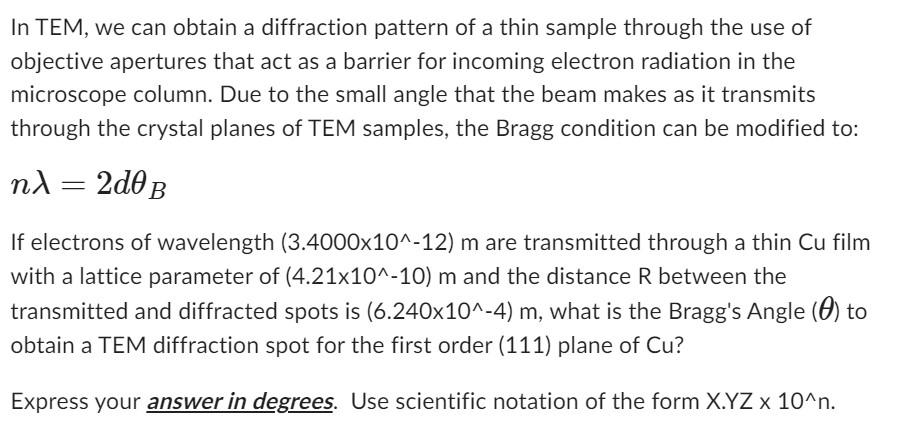Home /
Expert Answers /
Chemical Engineering /
in-tem-we-can-obtain-a-diffraction-pattern-of-a-thin-sample-through-the-use-of-objective-aperture-pa586
(Solved): In TEM, we can obtain a diffraction pattern of a thin sample through the use of objective aperture ...
In TEM, we can obtain a diffraction pattern of a thin sample through the use of objective apertures that act as a barrier for incoming electron radiation in the microscope column. Due to the small angle that the beam makes as it transmits through the crystal planes of TEM samples, the Bragg condition can be modified to: \( n \lambda=2 d \theta_{B} \) If electrons of wavelength \( \left(3.4000 \times 10^{\wedge}-12\right) \mathrm{m} \) are transmitted through a thin Cu film with a lattice parameter of \( \left(4.21 \times 10^{\wedge}-10\right) \mathrm{m} \) and the distance \( \mathrm{R} \) between the transmitted and diffracted spots is \( \left(6.240 \times 10^{\wedge}-4\right) \mathrm{m} \), what is the Bragg's Angle \( (\theta) \) to obtain a TEM diffraction spot for the first order (111) plane of Cu? Express your answer in degrees. Use scientific notation of the form \( X . Y Z \times 10^{\wedge} n \).
